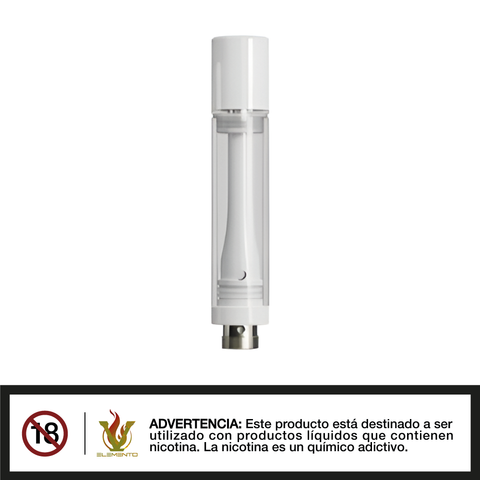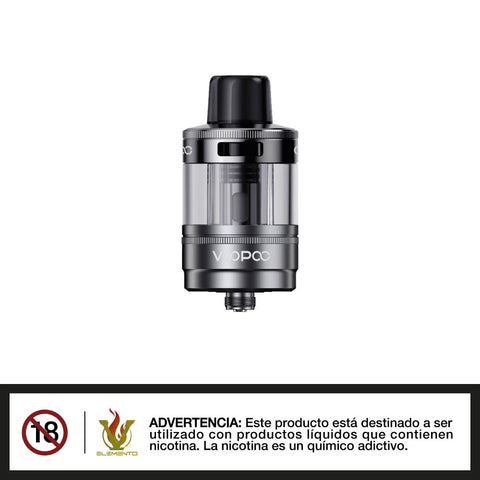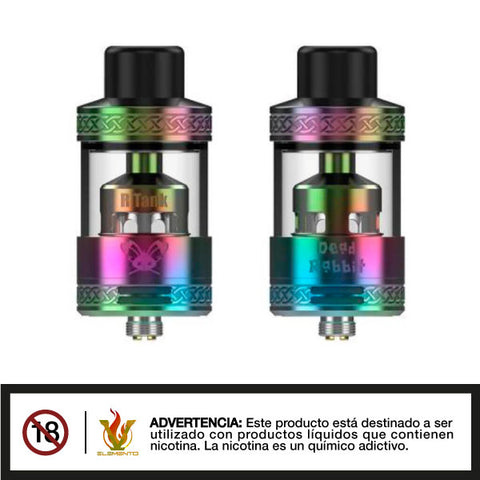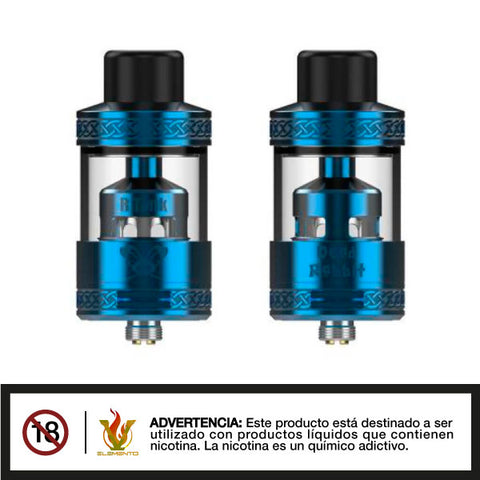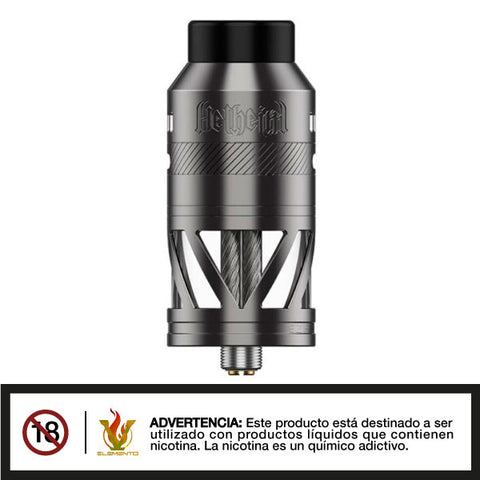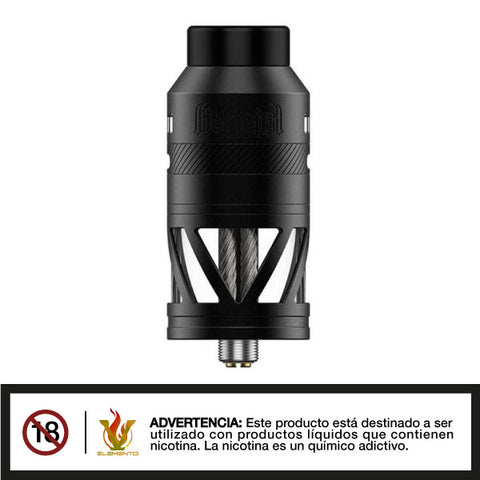Vaporesso GEN SE Kit
Eleva tu experiencia de vapeo con el Vaporesso GEN SE Kit, diseñado tanto para principiantes como para vapeadores experimentados que buscan fiabilidad y rendimiento. Este elegante dispositivo cuenta con un tanque de 3 ml de capacidad, asegurando un amplio e-líquido para sesiones prolongadas. Equipado con bobinas de malla GTi 0,2Ω y GTi 0,4Ω, ofrece un sabor y una producción de vapor excepcionales.
Alimentado por una sola batería 18650 (no incluida), el Kit GEN SE de Vaporesso ofrece un rango de potencia de salida ajustable de 5-80W, atendiendo a diversas preferencias de vapeo. La pantalla TFT de 0,96» proporciona una interfaz clara e intuitiva, mostrando la información esencial de un vistazo. Es compatible con GTi Coils.
Productos relacionados:
Características
- Capacidad del TANQUE: 3ml
- Resistencia de la bobina: GTi 0.2Ω Mesh Coil / GTi 0.4Ω Mesh Coil
- Capacidad de la batería: 1x18650 batería (no incluida)
- Potencia de salida: 5-80W
- Corriente de Carga: DC 5V/2A, Tipo-C
- Pantalla: Pantalla TFT de 0,96
Contenido del paquete:
- 1 x VAPORESSO GEN SE MOD
- 1 x VAPORESSO iTank T
- 1 x GTi 0.2Ω bobina de malla (preinstalado)
- 1 x GTi 0.4Ω Mesh Coil(En la caja)
- 1 x Tubo de vidrio extra (6ml)
- 2 x Junta tórica
- 1 x Tapón de silicona
- 1 x Cable TYPE-C
- 1 x Manual de Usuario y Tarjeta de Garantía
- 1 x Manual de Seguridad
En Quinto Elemento Vap nos especializamos en la venta de vaporizadores, líquidos para vapeo, repuestos, accesorios y más.
Do you have any doubt? Our vape experts are here to help you
Nicotine is an alkaloid derived from ornithine found in plants of the genus Nicotiana sp. The effects of nicotine in man depend on the dose, being able to behave as a stimulant or as a blocker of ganglionic nerve transmission.
How does nicotine work?
Nicotine is absorbed into the bloodstream and reaches the adrenal glands, which are located above the kidneys. These glands release adrenaline, which increases blood pressure, heart rate, and breathing rate. Adrenaline also causes many pleasant sensations, all at the same time.
What other effects does nicotine have on health?
Although nicotine is addictive, most of the health effects are caused by other chemicals found in tobacco. Tobacco use damages each and every organ in the body. Smoking tobacco products can cause lung, mouth, stomach, kidney, and bladder cancer. It can also cause lung diseases — such as coughs — and heart disease, vision problems, and yellowed teeth. Smokeless tobacco products are also dangerous. They can cause mouth cancer and heart and gum disease.
How is nicotine addiction created?
Over time, the nicotine found in tobacco can change the way the brain works. When a person stops using nicotine, the body can become confused and start to feel very sick. This makes it difficult to quit nicotine, even when we know it is harmful. That is called addiction.
Contraindications of Nicotine
Hypersensitivity to nicotine, non-smokers or occasional smokers, children, pregnancy, lactation, recent myocardial infarction, unstable angina pectoris or aggravation of it, Prinzmetal's angina, serious cardiac arrhythmias, cerebrovascular accident, insuf. advanced cardiac.
Warnings and Precautions Nicotine
HTA, stable angina pectoris, enf. cerebrovascular disease occlusive peripheral arterial insuf. heart disease, diabetes mellitus, peptic ulcer, hyperthyroidism, pheochromocytoma, IR or IH, atopic or eczematous dermatitis (transdermal patches). Oral forms caution in: active esophagitis, oral or pharyngeal inflammation, gastritis. Risk of inducing tolerance and physical dependence.
Nicotine in pregnancy
Nicotine has harmful effects on fetal health clearly defined as: low birth weight, increased risk of spontaneous abortion and increased perinatal mortality. It can produce, depending on the dose, alterations in the fetal circulation and in the respiratory movements of the fetus. In the 3rd trimester, nicotine has hemodynamic effects (such as changes in fetal heart rate) that can affect the fetus near delivery.
Nicotine in Lactation
Contraindicated in lactating women. Nicotine is excreted in breast milk in amounts that may affect the nursing infant, even at therapeutic doses. Consequently, during the lactation period, the use of nicotine replacement therapy products should be avoided, as should smoking. If you have not been able to quit smoking, the use of oral forms is preferable to that of patches. The use of nicotine replacement therapy during lactation should only be started after consulting a doctor.
Nicotine Adverse Reactions
Systemic: asthenia, flu syndrome, headache, pain, constipation, diarrhea, dyspepsia, nausea, vomiting, flatulence, hiccups, gastritis, stomatitis, esophagitis, myalgia, arthralgia, sleep disorders, insomnia, dyspnea, tremor, dizziness, dryness mouth, nervousness, increased coughing, pharyngitis, palpitations, increased sweating. Local: transient rash, pruritus, edema, burning and tingling sensations.










